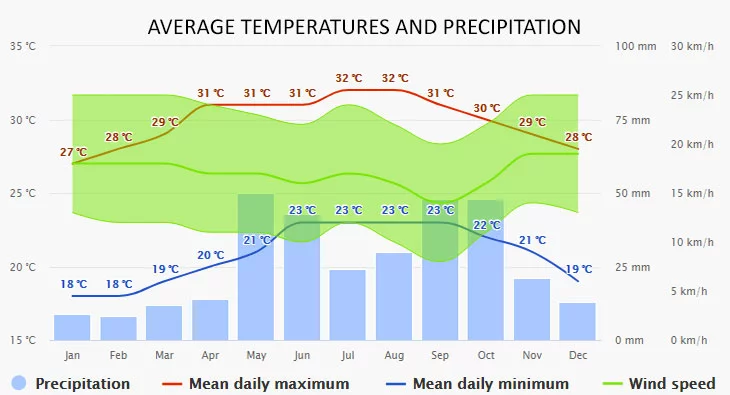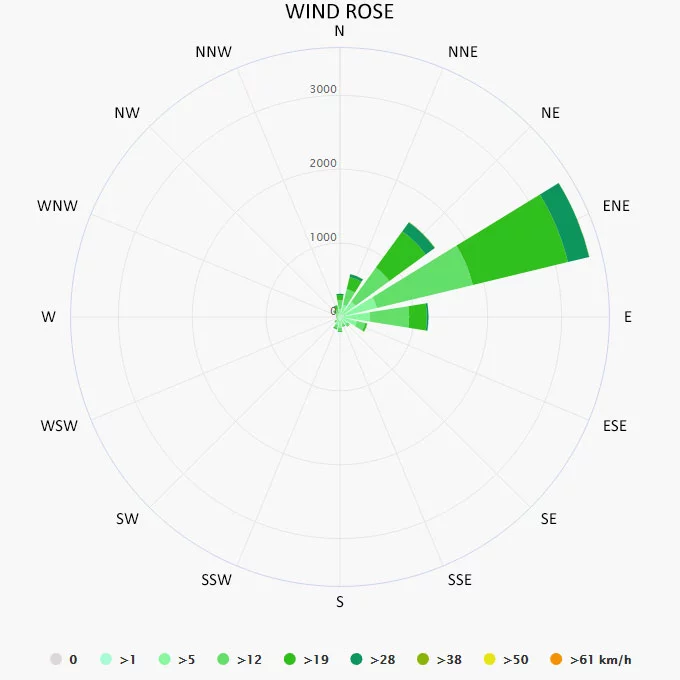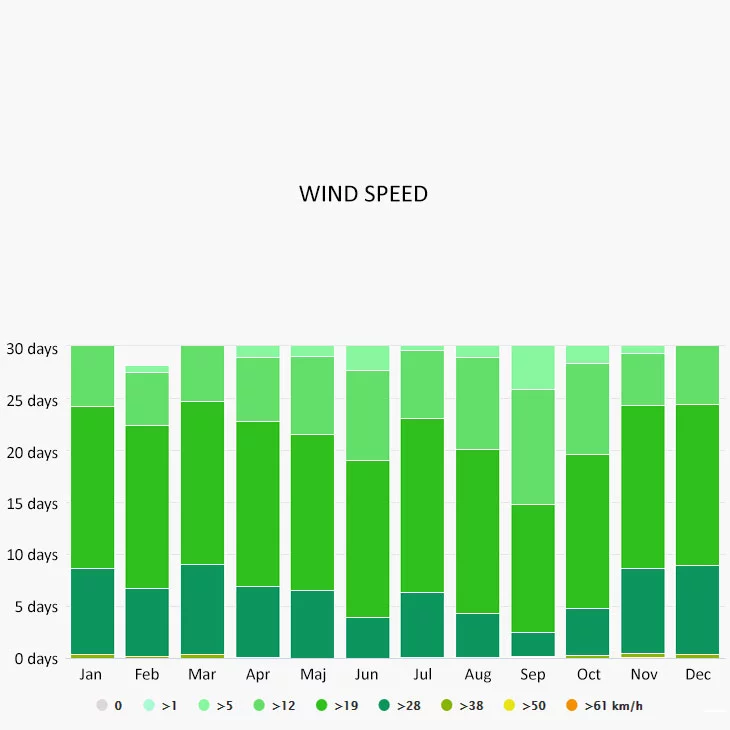Change destination X
Distance
Date from
Duration
You must choose a "Date from" before specifying the duration!
Flexibility
Cabins
Berths
to
Types
Sevice Types
Length
to
Renting a Cuba in Greater Antille’s & discovering the yacht Coasts, what are your needs? Get your offer! Explore the romantic bays and hidden sandy beaches. Do not hesitate – to begin your unforgettable journey right now! Tips and advice on how to make the best of your time while sailing in Cuba.
Read more information about yacht charter in Cuba on the following tabs: Cuba useful information, Which period is best to sail in Cuba?. Get some inspiration from the Cuba yacht charter itineraries tab and start planning your next sailing itinerary, read detailed descriptions of Cuba sailing destinations, or Cuba sailing article.
Change destination X
Distance
Date from
Duration
You must choose a "Date from" before specifying the duration!
Flexibility
Cabins
Berths
to
Types
Sevice Types
Length
to
Would you visit the Caribbean Sea? Are you unsure about which region or island is the ideal choice? Do you prefer beautiful beaches, but historical time travel is also important for you? The island of Cuba has all of these!
The Republic of Cuba – or colloquially just Cuba – is a Caribbean island nation. It’s the largest island of the Greater Antilles surrounded by the Atlantic Ocean from the east, the Gulf of Mexico from the west, and the Caribbean Sea from the south. The neighbouring island is the Bahamas to the northeast, Haiti to the southeast, and finally the Cayman Islands and Jamaica to the south. The total surface area of the island is 110 861 km2 and has 11 million inhabitants, of which three-quarters live in cities. There are 7 ports and 78 airports in Cuba.
In Cuba, a license is not specifically required. You simply need to fill out a sailing resume and only charter a yacht that your experience permits. Before you confirm your sailing trip to the Cuba, please send us your sailing experience, or a copy of your skipper licence and we will check it for you.If you do not have a skipper license, or experience it is also possible to rent a yacht with a skipper
The largest port of Cuba is just a few km from the city centre. Boats can enter the port from the north through a short, straight inlet. It is divided into three parts: Marimelena, Atarés and Guanabacoa. The depth of the seabed is between 4, 6 and 11, 9 m. The port can accommodate larger boats. Due to its size, location and infrastructure, there are several commercial terminals. It is an important centre for fish, fuel and oil trade.
They started building the port of Mariel in 2009. The canal was dredged to 18 m (even deeper than the port of Havana) so Super-Panamax vessels can also use it. Enormous cruise ships can moor here, there are logistics centres, shopping centres and many entertainment options for tourists.
It is located at the eastern end of Cuba. It is a well-protected port against winds. The canals are 22 m wide. The maximum depth of the seabed is 7, 6 m. The services include refuelling and water resupplying. It is a major port for sugar export.
The main port in the southern part of the island is La Perla del Sur or the Pearl of the South. The port of Cienfuegos is considered a large port in Cuba. It can accommodate boats up to 150 m. The depth of the seabed is 12 m. While Christopher Columbus visited in 1494, it was formally founded in 1819.
This small port is mainly recommended for local boats and smaller boats. The main attraction of this port is the nearby beach. It is less known, so you can relax in a peaceful environment. You should also visit the local restaurants that offer authentic Cuban specialities.
The second-largest port city of Cuba is located in the southeastern part of the island, in Oriente Province. It is a major port for import and export in the region. The bay is quiet and protected against winds. The famous Casa del Habano is a few-minute walk from the port. Here, you can buy the best-quality Cuban cigars and you can visit the Bacardi Museum.
The port of Nuevitas is on the Guincho Peninsula. It is a smaller port and a major shipping point for sugar. The depth of the seabed is 9-10 m, the canals are 7-10 m wide. There are port elevators and cranes that work around the clock. The services include water resupplying and refuelling. However, boat maintenance is only available to a limited extent.
Thanks to tourism the ports have full service and equipment. Many think of Cuba as constant milling and liveliness, that only offers a perfect pastime for young people. This island, however, has a lot more up its sleeves. Buildings silently talk about history, which you can also experience when you arrive. Don’t hesitate to take off on this journey! Find sailing routes in Cuba or choose another yacht rental Caribbean
The Playa Paraiso is a gorgeous, almost untouched seacoast. It’s famous for its ancient white sandy shore and sparkling turquoise water. In 2016, it earned the title of the third most beautiful beach in the world. The beach is known for Cuba’s calmest water. The beachline offers a relaxing atmosphere and a perfect escape from the usual milling of Cuba.
Varadero beach is one of the most popular beaches in Cuba, that offers a full service in terms of a seaside holiday. The wonderful, 25 km long, straight, white, sandy shore spreads out on the whole peninsula. The combination of blue and green water creates a great border between the land and the gullet of Florida. Besides all of this, there are more than thirty diving spots on the peninsula and you can enjoy other water sports as well. If you wish for a more adventurous program, rent a boat to discover the localities.
Playa Los Flamencos, known as Cayo Coco Beach, is the most popular all-inclusive holiday resort. It’s an island that belongs to Cuba. The 22 km long, white, sandy shore of the island and its sapphire water is every vacationer’s dream come true. The Cayo Coco connects with Cayo Guillermo on the west and Cayo Romano in the east. Take the water to explore the most stunning beaches on the island!
The colonial cities in Cuba haven’t changed with the passage of time, and still, they’re more wonderful than ever. When you visit Cuba, you may feel like time has trapped you on the cobbled streets, where everything is telling stories about an era, when pirates landed on the Caribbean islands. It’s worth spending a night in Malécon to taste the street food and enjoy the melodies of live Cuban jazz music. Visit the one-time house of Ernest Hemingway, the FincaVigía, which is a museum now. The city of Cienfuegos is known for the Plaza de Armas square, which is surrounded by neoclassical buildings. The city is a part of the UNESCO World Heritage. If you come here, you should definitely go sightseeing in Cienfuegos. Here, you’ll certainly find anything you need.
The Caribbean region has the traits of all year hot and humid tropical climate. The weather is somewhat cool and dry from the middle of January to the middle of April. From the middle of June to the middle of November it’s usually hot, wet, and rainy. Hurricanes are frequent on the island. Many times more than one sweeps over the region annually.

The climate diagrams are based on 30 years of hourly weather model simulations. They give good indications of typical climate patterns and expected conditions (temperature, precipitation, sunshine, and wind). The “mean daily maximum” (solid red line) shows the maximum temperature of an average day for every month in Cuba. Likewise, the “mean daily minimum” (solid blue line) shows the average minimum temperature.


The wind rose for Cuba shows how many hours per year the wind blows from the indicated direction. The diagram for Cuba shows the days per month, during which the wind reaches a certain speed.
The climate in Cuba is fairly uniform from one area to the other, but there are some differences that are worth considering. On the coast, the climate is generally balmy year-round. Some months, however, are rainy and others dry. Cuban climate is influenced by the northeast trade winds in winter and by east-northeast winds in summer. The annual mean temperature is 26 °C.
The amount of sunshine in Cuba peaks in spring, when the winter disturbances decrease, and before the clouds and rains of the warm season. During the rainy season, there’s heat everywhere, it is tempered by the trade winds or the breeze. The hottest months are in summer in July and August. The daytime temperature rarely exceeds 34 °C. Winter in Cuba is pleasantly warm in the north and even quite hot in the south. In the south, where the only mountainous areas are found, there is a greater difference between the slopes. Hurricanes develop in the region between June and November. The rainy season lasts in Cuba from May to October. Late November brings the Dry Season which lasts through late April.
If you want more accurate/detailed information about the weather and wind conditions, select a region from the yacht charter in Cuba destinations tab. Please search for the desired holiday destination within the region and you can find the weather tab under the city tab.
Day 1. Baracoa – Moa 62, 00 km (38, 53 nm), Day 2. Moa – Tanamo 47, 17 km (29, 31 nm), Day 3. Tanamo – Nicaro 29, 92 km (18, 59 nm), Day 4. Nicaro – Antilla 43, 58 km (27, 08 nm), Day 5. Antilla – Banes 49, 26 km (30, 61 nm), Day 6. Banes – Punta Gorda 96, 39 km (59, 89 nm), Day 7. Punta Gorda – Cayo Güín – Baracoa 54, 26 km (33, 71 nm).
Cuba sailing tours , or more Caribbean sailing routes
Excellent
"If you rented a boat from us, we don't need to introduce ourselves. If you book with us for the first time, you will soon get to know us." 🙂 Some feedback about us...